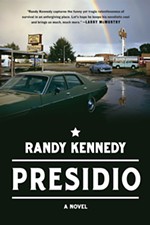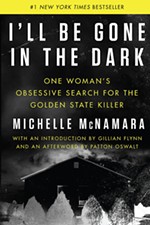Book Reviews
Fri., April 2, 1999
|
|
Among today's literati are those who believe "suspense novels" are to fiction what Armageddon is to film, a dumbing-down of the medium for the masses. The Color of Night is literary fiction masquerading as a "thriller," a well-paced and riveting story set in Europe with occasional trips to Houston. The author's elegant prose portrays life as it is, not as we want it to be. Lindsey, raised and educated in West Texas, has eschewed the barbed wire and tumbleweeds of his origins and struck out for literary life in the urban centers. A member of the Texas Institute of Letters, he is easily among the most accomplished graduates of Angelo State University in San Angelo. This is Lindsey's first novel with Warner Books, and chairman Lawrence J. Kirshbaum is glad to have it, writing in the advance copies, "It has become a cliché to compare literary thriller writers to John Le Carré and Richard North Patterson, but David Lindsey unquestionably belongs in their company." Kirkus Review agrees in a recent article that "Lindsey is in that army of thriller writers who are regularly measured against Le Carré."
It's an old Hollywood axiom that "the better the book, the worse the movie." Don't wait for The Color of Night to come to the silver screen. Much of Lindsey's oeuvre has been optioned over the years but has yet to make it to a theatre near you. Buy the book now, enjoy the read, and complain about the movie later. -- Cary L. Roberts
David Lindsey will read from and sign The Color of Night at Book People, Thursday, April 8 at 7pm.
While sitting in a Harlem club as he and his friends frequently did, listening to a vocalist, it occurred to composer Virgil Thomson that the cast of Four Saints in Three Acts, which ranks among the most remarkable productions performed in America, should be black, partly because he thought they'd be able to enunciate librettist Gertrude Stein's words more clearly than whites. Thomson said that "The whites always kind of resisted Gertrude, whereas the blacks understood her perfectly well and took to it like ducks to water." In doing so, Thomson took a bold step; at the time, as Steven Watson, the author of Prepare for Saints, an illuminating book about events and people that deserve illumination, points out, it was very unusual for black actors "to play roles unrelated to black life." Still, Thomson held "many of the racist views of his childhood and times." He had ongoing conflicts with choir director Eva Jessye, who wanted to give the music more of a gospel feeling. Thomson required a straight performance. "You mustn't let them do that," he said to her, "for all that takes the education out of them. That's the way they go African."
| Prepare for Saints: Gertrude Stein, Virgil Thomson, and |
After a smash opening in Hartford, Four Saints moved to Broadway, where it set a record for the longest-running opera. Though seldom performed today, it had a lot to do with introducing and/or popularizing modernism in the United States. Watson's research has yielded much fascinating and substantial information and he weaves the various strands of his story together with great skill and coherence. His social and psychological observations are shrewd and seem valid. Fortunately, he does not idealize his subjects. -- Harvey Pekar
The world will end soon. So they say. Our computers will crash; darkness will fall; the Four Horsemen will ride; seas will boil, and the great kraken who sleepeth beneath the thunders of the upper deep will rise: The millennium is near.
Of course, it could be that nothing happens, that we wake up Saturday morning, pour ourselves a giant bowl of super sugar Choco Puffs, and watch Saturday morning cartoons with our kids just like always. But, just in case we find ourselves reduced to hunting and gathering and worshipping golden calves, we have Peter Conrad's Modern Times, Modern Places: How Life and Art Were Transformed in a Century of Revolution, Innovation, and Radical Change to remind us how we were and how we got here.
| Modern Times, Modern Places |
Most of what Conrad writes about, in and of itself, is at least interesting. In the end, however, there is so much out there, but really only so much to be said and only so many ways to say it. The text becomes repetitive, and by the time his thoughts come to a conclusion (that "modernity had a single, simple project, carried through in all fields of mental endeavor. Declining to give God credit for creating, it took the world to pieces."), you wonder if he couldn't have said it sooner.
I must say this, though: The man knows just about everything about just about everything, and the correlation Conrad makes between high culture and pop culture and science and philosophy and sociology ("the representative modern man could be recognized from his feet -- or at least from his shoes") can be brilliant because of his clarity and thoughtful insight. If nothing else, Conrad has written a wonderfully complete, if somewhat exhaustive and exhausting, desk reference to everything that changed art in the 20th century -- and everything that art did to change us. -- Manuel Gonzales








